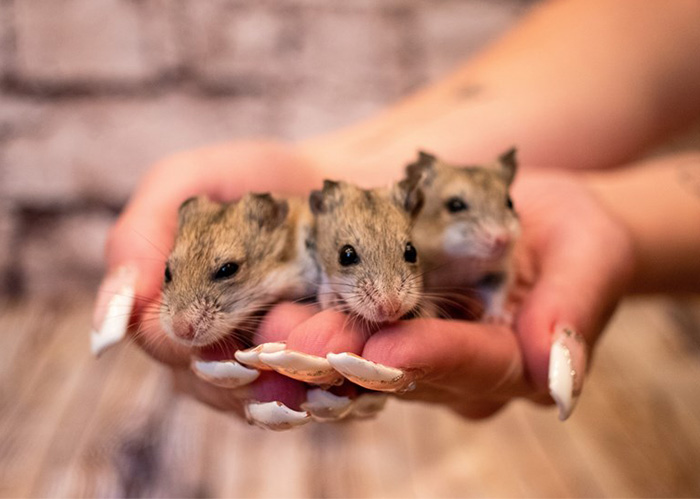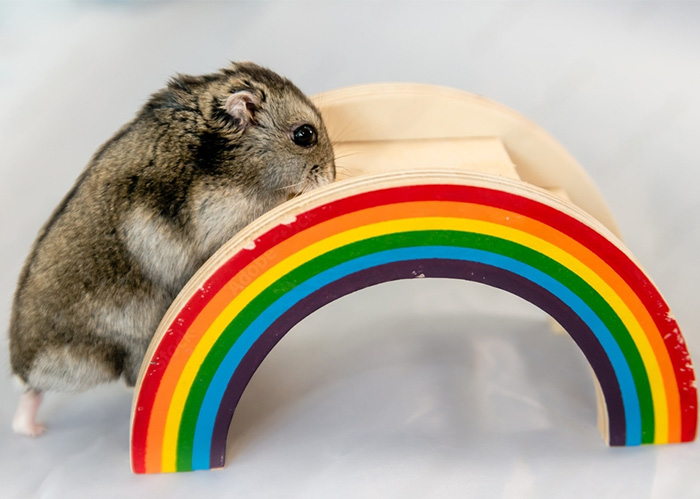



Chinese Striped Hamster
It is often referred to as a dwarf hamster, but it is actually classified as a rat - like a species and most resembles a mouse and its relatives such as the rabbit and the mouse.Chinese hamster has a longer and more prominent tail than other hamsters. They have long, thin bodies, especially compared to Syrian hamsters, but they also have simply longer tails. Chinese hamsters are excellent climbers who use their easily graspable tails as a tool, although they have little room in most conventional cages to demonstrate their tree-like abilities. Chinese hamsters will not form a close bond and will only come to the side of their enclosure if bees or other animals are found nearby or nearby. Chinese hamsters are dark brown and are sometimes mistaken for the Russian hamster. They have black stripes on the spines and on their belly is white, and they have a black stripe along the spines and a white stripe on the tip of the tail.
Chinese hamsters can catch colds and other diseases from their human owners, so if you have a cold, cough or stomach complaint, don't touch your hamster until you feel better and wash your hands after changing food and water. Chinese hamsters have also been used as laboratory animals, replacing common mice and rats, which are easier to keep and breed. The common hamster species in North America are kept as pets by the US Department of Agriculture (USDA) and the US Fish and Wildlife Service (USFS).
We deals in Chinese Dwarf Hamsters in different color patterns like Black, White, Bluish, Wild, Grey, High Mottled, etc.
| Species Gender | Weight | Length |
|---|---|---|
| Chinese Dwarf Hamster | 30-45 gm | 82-127 mm |

Chinese Striped Hamster Diet
Wild hamsters are fed seeds, cereals, nuts, vegetation and insects, but remember your hammy not become fatty! Most owners put the food for the day in a small ceramic bowl in the enclosure, and the hamster feeds on the seeds and grains. The food is placed in a separate bowl, separate from the hamster's staple food, and dietary supplements should not be considered. If your hamsters prefer to graze during the day or at night or eat certain meals, do not do so. The standard hamster feed is supplemented with a mixture of seeds, cereals, nuts, cereals, fruits, vegetables, insects and insects. Some options include apples, carrots and pieces of oat, while others contain nuts, seeds, fruit, vegetables, insects and insects. Fresh food only needs to be fed when the hamster is awake, often in the evening, so that it can eat it before it starts to spoil. Remove fresh food from the enclosure after 24 hours and be sure to look for food that hamsters have stowed away in bedding. The best way to use a small water bottle is to attach it to the side of the enclosure, but make sure the hamster drinks consistently from the bottle before removing its water bowl. A more hygienic water bowl remains in the same place as the water bottle, for example on top of a wall or in a corner of your housing.